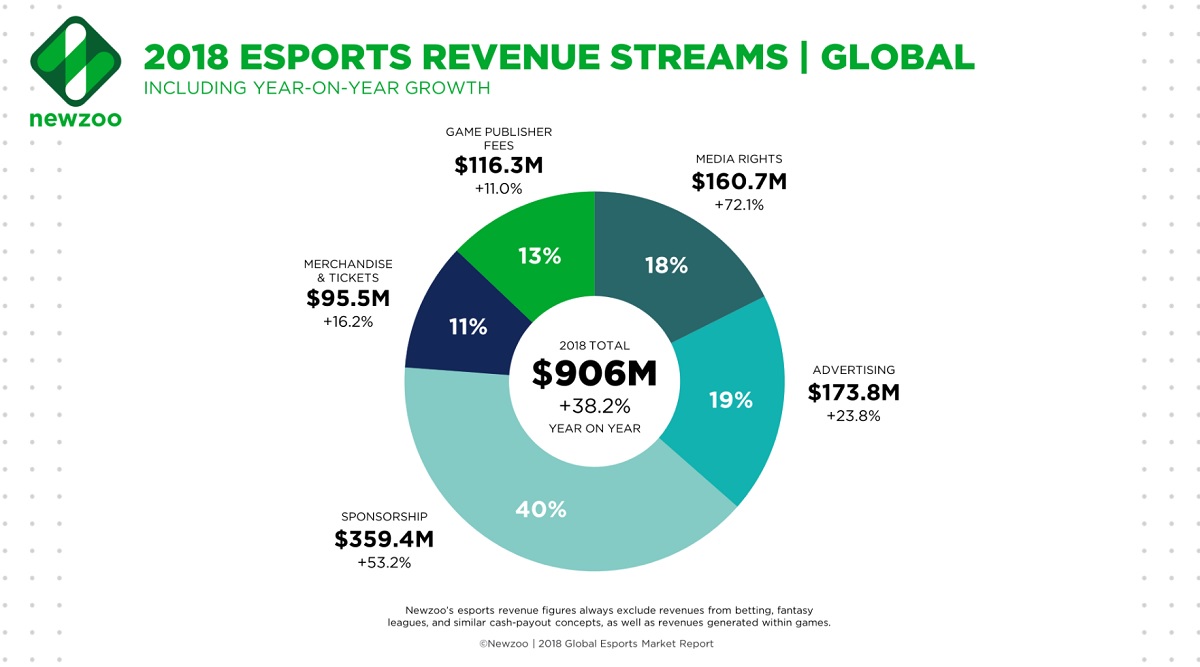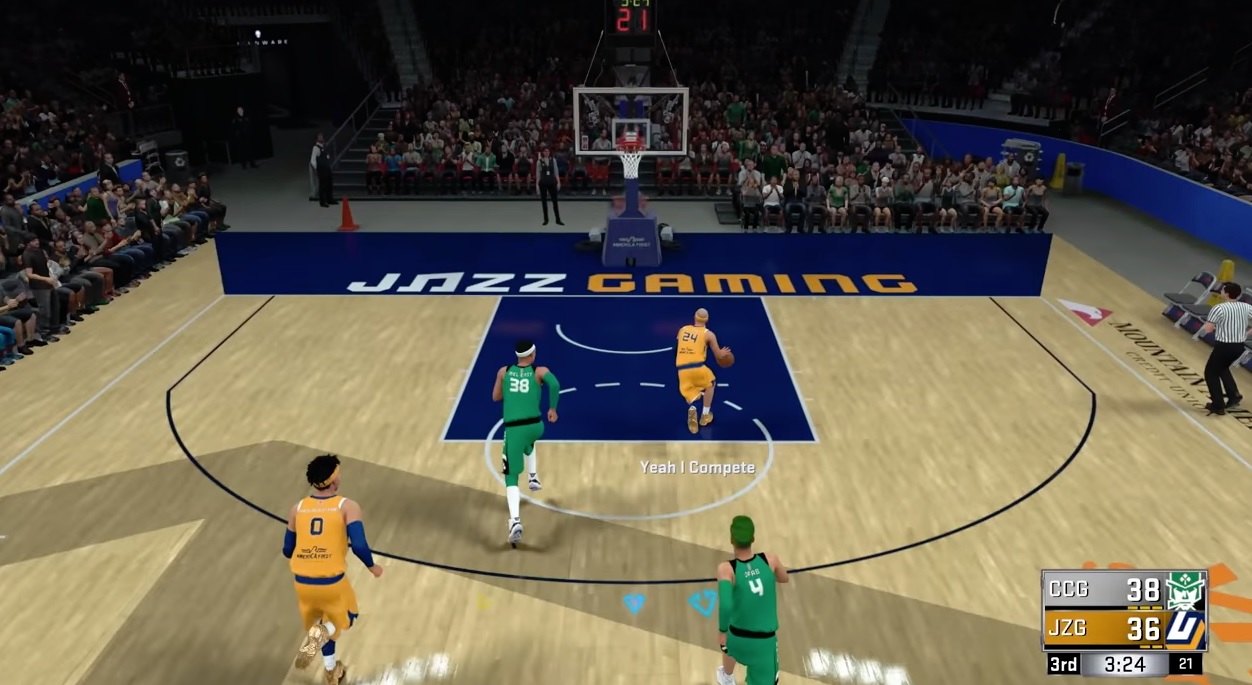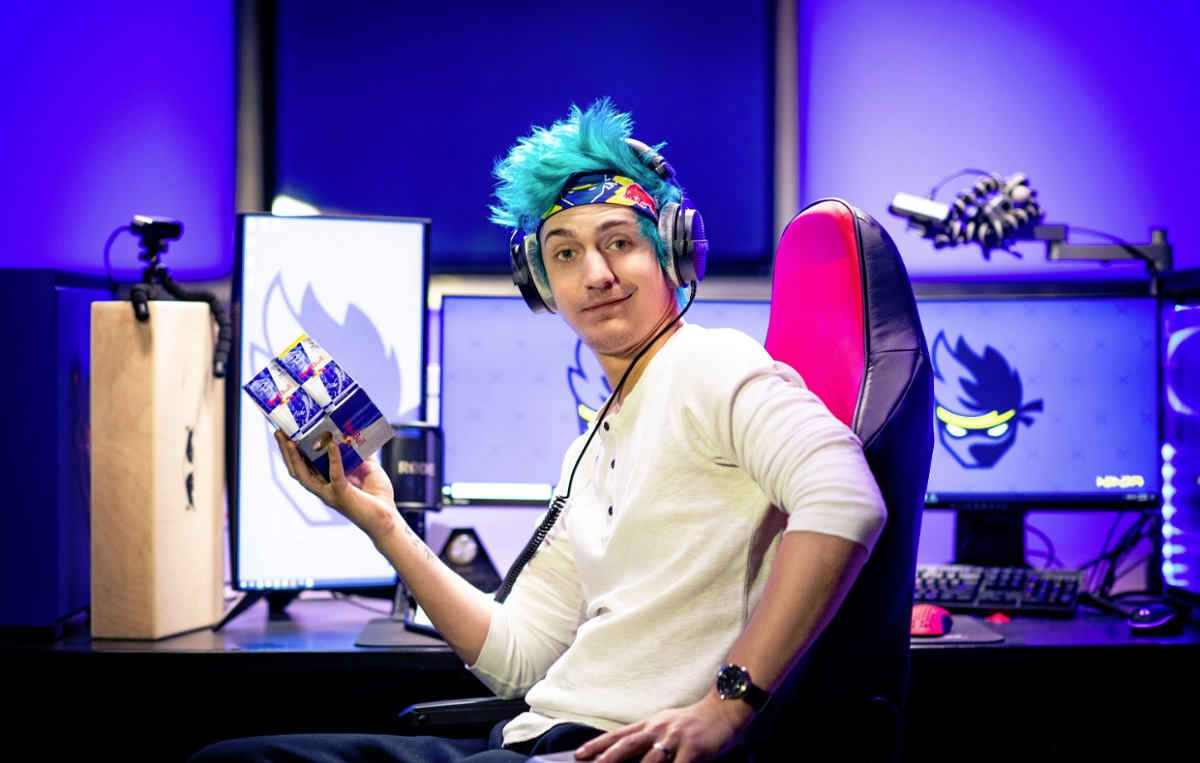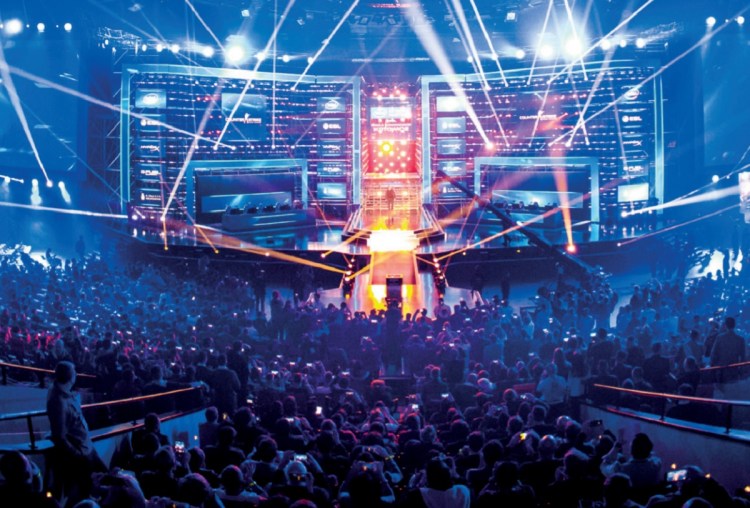
Above: Sponsorship is the biggest source of revenue for esports in 2018.
GamesBeat: I thought it was interesting to compare esports and traditional sports when it comes to the revenue that comes in per fan. Newzoo has said that the revenue per esports fan in 2019 is going to be about $5.45. In a couple of years that’ll go up to $6.02. If you look at the NBA and a team like the Golden State Warriors–the average value of an NBA team, by the way, is $1.9 billion. The Warriors make about $50 per fan per year. The Cleveland Cavaliers make almost $90 per fan.
It’s an interesting contrast as far as showing us where esports is and how much potential it has to grow. The question is, how is it going to get there?
Lynch: You have to recognize some dramatic distinctions. One of them is, when you want to play basketball in your backyard, you don’t have to pay the NBA. When you want to get a new basketball, you don’t have to pay the NBA. When you want to get a new skin for your Fortnite character, you have to pay Epic Games.
A lot of those revenue-per-fan numbers, in my view, are not quite apples to apples. Fans of an NBA team–what they spend on merchandise from that team and what the team generates from that is potentially less than what a publisher generates from the player of a game. The question is, when it comes to esports revenue and looking that’s branded at the professional level, whether it’s the Madden league or the teams that are formed to participate in pro Madden competitions, and the players themselves who are on those teams and how their rights can be merchandised and monetized, I think those are where the comparisons make sense.
June 5th: The AI Audit in NYC
Join us next week in NYC to engage with top executive leaders, delving into strategies for auditing AI models to ensure fairness, optimal performance, and ethical compliance across diverse organizations. Secure your attendance for this exclusive invite-only event.
But there’s always going to be a big gap, in my view. I don’t think they’re going to end up being equal, because of the fact that players who are fans of esports are already spending a considerable amount of money just to play the game they enjoy.

Above: NBA 2K Esports
Ng: The underlying element of esports is video games. Video games are the largest form of entertainment now, by far. They’re bigger than movies and music put together. Millennials, Gen Z, they’re used to paying for game content. But like I say, we’re still at the very early stage for esports as an industry.
Competitive gaming has been around for a long time, but as an industry we only started seeing media rights being sold by publishers to broadcasters in the past 18 months. We only just started selling the raw ingredient, the feed for the finals or whatever match you’re talking about. That’s a fundamental, basic element of selling content, and broadcasters still don’t fully know what to do with it. Maybe they get a poor rating on TV and they think it’s the game’s fault. Not true. It’s just not being processed properly.
For sports, one of the biggest chunks of revenue is media rights. The value is huge. It’s just that we need to create more formats, like what EA is exploring with ESPN. I believe that if broadcasters can come in with a different angle, rather than trying to replicate whatever they’ve done before with traditional sports, there’s a huge potential. This audience base loves to spend money on their games.
Edelman: What drives the value of media rights these days is advertising, and to some degree subscriptions to your sport of choice. But another thing that’s happening in an exciting fashion for all of us up here is the number of brands that are investing in money in esports now, sponsoring professional leagues and amateur programs like the ones we run, or venues like the arena here in Las Vegas. The more brands who get into the space, who choose to spend their money to reach esports viewers, the more we’ll evolve esports broadcasting.
Clevinger: We’re now starting to see a larger presence of non-endemic brands coming into the space. You mentioned the Golden State Warriors. Chase partnered to create a Warriors-branded esports team. They’ll have benefits tied to Chase credit cards and so on. It’s a great intersection of all of these things. The more non-endemic brands associated with the space, whether it’s events at facilities events around particular games–we’re going to see much more interest in the ecosystem. There’s a reason why these large brands and these large traditional sports companies are interested in esports. We’re going to see much more seriousness around getting non-endemic brands engaged with esports.
Lynch: Obviously we’re getting to see more people engaged and the cycle is getting bigger and bigger. The more advertisers come in, the more money that’s coming in, the more we get for production, the more we get dig into more technology, the more we get to do, which will help raise the bar for everyone. It’s really just the beginning now, with all the new brands coming in.
Question: My main focus around these things is digital objects. What are your opinions around this idea of creating a crypto platform where, setting all the cryptocurrency stuff aside, we can create digital objects like trophies, things that people can collect and so on? Do you see a future in that, and do you think that’s going to be a centralized economic model, like Epic Games selling skins, or do you think that’s eventually going to become a more distributed economy?
Ng: This is an extremely important element of games, this kind of item system. It’s critical. Because it’s so critical, every publisher feels that it’s their baby. If you start touching that, you have to be extremely careful in managing your relationship with publishers. They freak out. If you start to have any system like that touching Fortnite, for example, it’s going to be a very delicate situation. So the delivery and how you organize and launch that kind of thing is critical. But yes, gamers love this kind of thing.
Clevinger: As a company that has a blockchain solution like this that we’re launching next week–IBM blockchain works really well. We have multiple entry points into a longer chain of custody around a specific number of assets. That’s why it works really well for the food safety space, and we have a great offering around that. I think when you start getting into–if you think about Fortnite, Epic owns that game. They own the platform. There’s no loss of chain of custody in that asset. There’s no loss of chain of custody around who was playing and what they were playing. I’m not sure that a crypto type of offering can make a dent in the space.

Above: Ninja, not posing at all, authentically holding his Red Bull.
GamesBeat: I thought it was interesting that Red Bull teamed up with Ninja to do a special Red Bull can with his face on it, but that’s a round of merchandise where we’ll see a lot of it. What if you had a single item, one item that was somehow associated with Ninja, and people could bid on it? What would that for? I think that blockchain and cryptocurrency would be the way to create that item and ensure that it’s truly authentic.
Clevinger: Yeah, but that lives outside the game space. Then you’re talking about creating an asset, something that literally is an asset. That’s a good use of blockchain. This thing exists. If you have an entire array of those types of assets, then there’s an interesting use of blockchain in that chain of custody scenario. But I don’t think that digital assets created by a publisher–I don’t think they’re that interested in using blockchain to validate those transactions.
Edelman: I don’t know how much this information relates to the viability of the crypto model here, but when Samsung got into business with Epic, they created a new skin, the Galaxy skin. Fortnite players could only get that skin if they bought a Samsung phone. There were people who bought a skin for $1,000.
Question: I’m interested in the gambling aspect of esports. I’ve been reading about a company called Unikrn, a gambling company. They’re not yet legal in the United States, but they’re operating in many other places. Now that we’ve legalized sports betting in the United States, the valuation of professional sports teams has skyrocketed.
GamesBeat: I know a bit about Unikrn. They can enable betting with cryptocurrency or with regular dollars on many kinds of matches. It’s skill-based, so it’s legal in 41 states. There’s another part of it, though, where they have to go outside the United States to enable various kinds of betting on different aspects. I can’t quite remember the distinction there. But as long as it’s skill-based they can run a gambling operation here in the U.S.
The game companies have long said that they don’t want to go there. They don’t want to go into gambling. There’s a distinction between entertainment and providing something that’s used for betting. It’s an opportunity for companies like Unikrn because the game companies don’t want to touch it. They don’t want to be associated with anything that minors could get into, or that could lead to addiction.
There are similarities in the relationships between other industries, like social casino games and real money casino games. But there are also some very hard lines, legal lines that have to be considered.
Lynch: Obviously our games, Madden and FIFA, are rated E for everyone. We have a lot of kids playing our games. To Dean’s point, this is not something we have any interest in getting involved with. From a sponsorship perspective, for instance, we don’t have alcohol sponsors or anything like that, because we have a lot of kids watching what we produce. So we have no plans, no road map to get involved with gambling at all.
Ng: For my part, we work with more than 50 casinos around the world. We just announced that WPT and Allied Esports have formed a partnership with the biggest sports channel in Mexico. That group also has a gambling license, so they ask a lot of the same questions. We hear them from casino operators around the world. It is happening, and it’s been happening for a long time with different games and different audiences, even if not all games are suitable for this.
There are publishers in the market that are looking to this, if not EA. They want to do it legally and they’re exploring that. It’s something to look into. In the future there will be a mature audience watching esports content who have a desire to bet on games. But I can tell you, to make that happen in a much larger way, the games will have to change. That match structure has to change. The kind of content will have to change. Then it can become much bigger than it is today.

